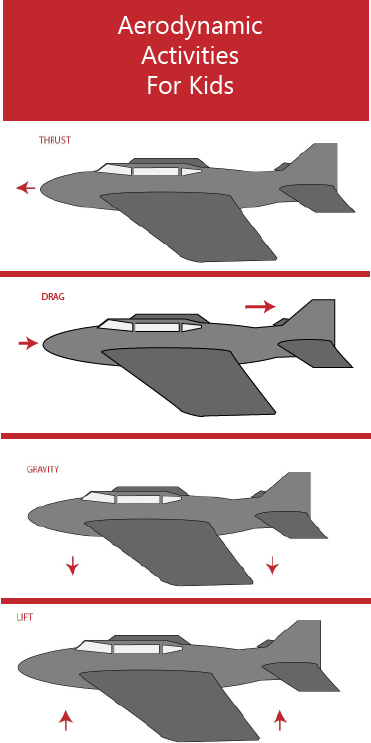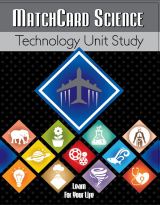Aerodynamics For Kids
Explain aerodynamics for kids using thrust, drag, lift, gravity, and Bernoullis’s Principle.
Free Download Below
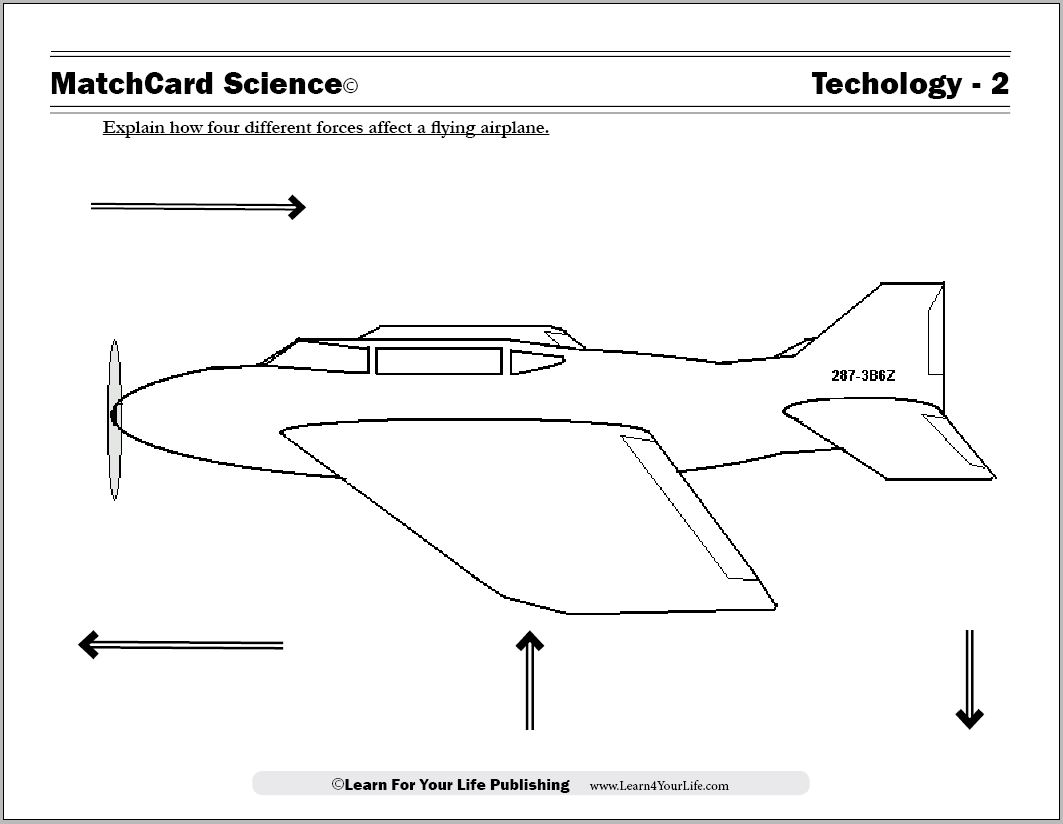

MatchCard Science Aerodynamics
Objective: Explain how four different forces affect a flying airplane.MatchCard: Download below.
MatchCard Information Pieces define and describe lift, drag, thrust, and gravity. Arrows indicate relation ship between speed and velocity in Bernoulli's Principle..
Print the Aerodynamics MatchCard


Click image to go to download.
This is MatchCard #2 of the Technology Unit Study. Find more information on MatchCard Science below.
Four Aerodynamic Forces
Thrust
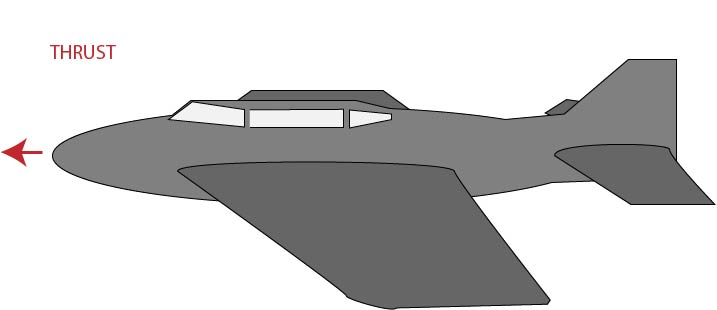
The engine of the plane provides the thrust.
See information below on projects to demonstrate these forces.
Drag
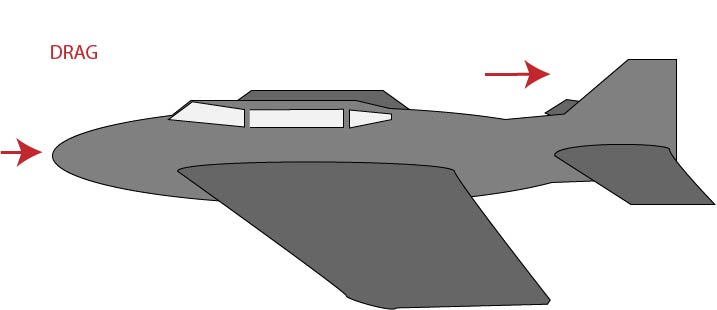
The drag will be greater if a plane is flying into wind and less if the wind is blowing in the same direction as it is going.
Gravity
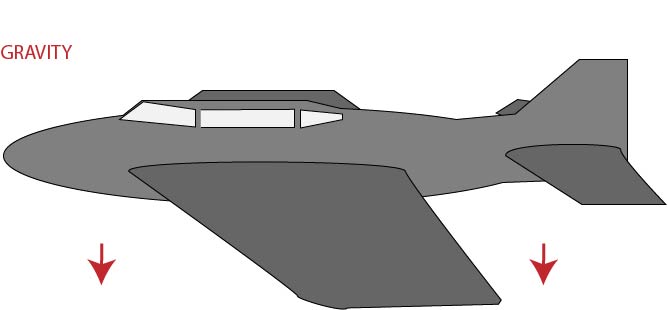
It creates a downward force on the airplane.
Lift
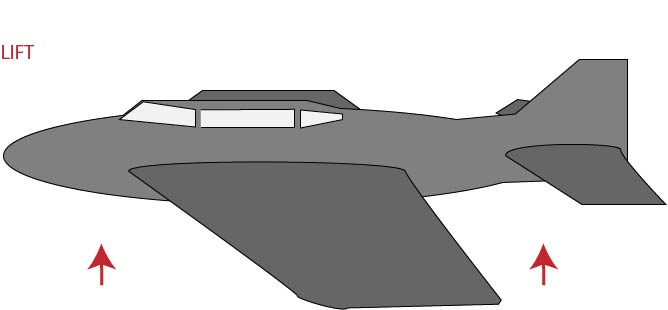
It was, in fact, the application of Bernoulli's Principle that finally allowed mankind to take-off into the skies.
An explanation of Bernoulli's Principle is below. Further below on the page you will find 5 demonstrations of Bernoulli at work.
Bernoulli's Principle
Bernoulli's Principle states that a fluid substance (including gas or air) will have lower pressure at high speeds, and higher pressure at low speeds.So how does this help our airplane?
Would air (or anything else) move farther if it was going over a curved surface (like a small hill) or a flat, straight surface surface?
The straight line is the shortest distance and the curved line is the longer distance.
Now if two people started running, one on flat surface and one on a curved hill, and they both started at ended at the same time, who ran the fastest. (The curved surface is larger so that runner ran faster.)
Airplane wings are flat on the underside and curved on the top. When a plane is speeding down the runway before take off, wind is going above and below its wings. The air going above the wing must go faster because it has a further distance to travel because of the curve. If the air is going faster over the wing, will there be higher or lower pressure over the wing. (Less pressure.) The lower pressure almost causes the plane to get “sucked” up into the sky.
Hands-On Demonstrations
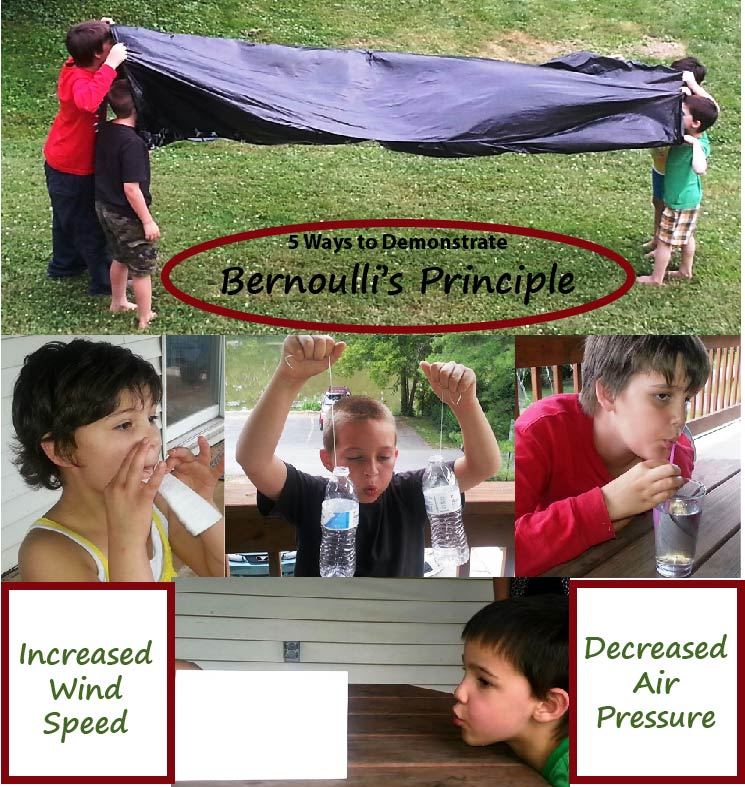
Thrust
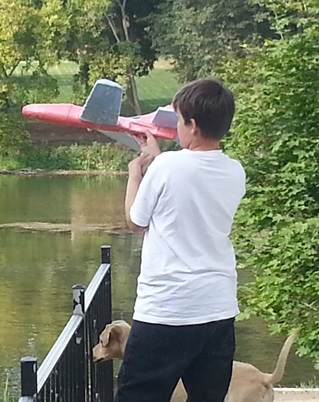
Here are a few other ways to demonstrate thrust:
- Balloon: Blow it up and let it go. The air pressure escaping propels the balloon forward.
- Paper or styrofoam airplane: What causes the thrust? The force from your hand.
- Rubberband: The stretch in a rubber band propels either the rubberband or a toy that is launched from the rubberband.
- Remote control plane: This is a little more fun and a little closer to the real deal. It just happens to be a little more expensive as well. But like the plane’s engine, the electrical power thrusts the plane forward.
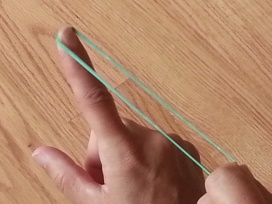
Drag
Nothing demonstrates the drag of wind like the wind itself. Fly your paper or styrofoam in the direction the wind is coming from and compare to the direction it is going to.Think: Airline captains announce to passenger’s their estimated time of arrival once a flight has taken off? Why isn’t the time of arrival the same as that listed on the ticket? Flight time will be longer or shorter depending on wind speed and direction.
Gravity
Of course the force of gravity is pulling the plane towards the surface of the Earth even as the lift as pulling it upward.Does gravity act inside an airplane? Yes, if the stewardess drops a cup of water on you it will fall.
Drop two objects one larger and one heavier off a deck or high porch and have them note they hit the ground at the same time. Try it with two objects the same size but different weights.
Would a large plane fall faster than a small plane? No. Gravity causes all objects to fall at the same speed regardless of weight or size. Certain objects (like a feather or parachute) will fall slower because of aerodynamics, not because of gravity.
Hands-On Demonstrations of Bernoulli's Principle
Bernoulli's Toilet Paper Trick

Result: Increased wind speed on top of the toilet paper decreases air pressure on the top and lifts the paper.
Bernoulli's Tent
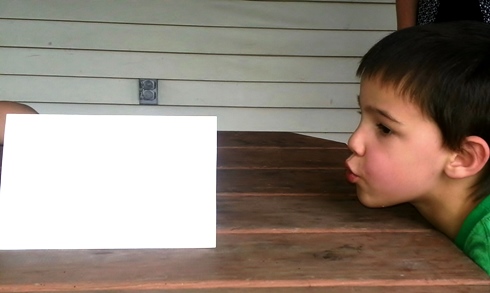
Result: Decreased air pressure inside of the paper tent causes it to collapse on itself.
Bernoulli's Bottles
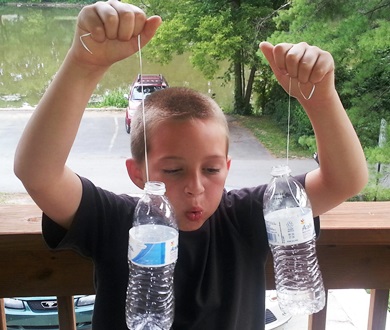
Altneratives to drinking bottles could include:
- 2 blow up round balloons
- 2 disposable drinking cups
Blow between the two objects. You can also use a hair dryer to blow between the objects.
Results: Decreased air pressure between the objects causes them to move together.
Bernoulli's Straw
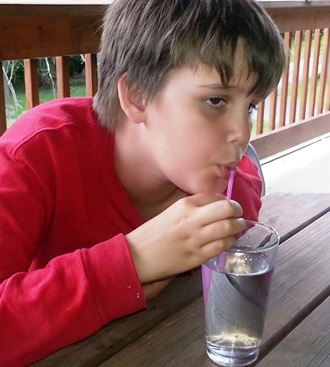
You will need another observer to watch the affect.
Result: Decreased air pressure over the straw causes the water to move up the straw slightly.
Bernoulli's Windsock
Really Cool to Do
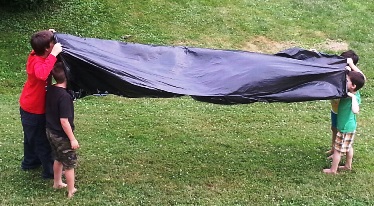
Open up the bag with your arms to decrease the attraction of the inside sides of the bag to the opposite side. Have two or more kids hold the bag on opposite sides.
One person blows into the bag.
Result: Increased speed of the air inside the bag decreases the pressure inside the bag causing the surrounding air to rush into the bag. The bag fills with much more air than the child has in his or her lungs.
Who Is Mr. Bernoulli?
So who is this Bernoulli character and did he invent airplanes?Nope, he lived a couple of hundred years before the Wright Brothers. You might want to investigate Daniel Bernoulli before we move on to figure out what his principle has to do with flying.
MatchCard Science
How To Use MatchCards

Download the FREE MatchCard Science Instructor's Guide and see how MatchCards can make building their science knowledge base fun.
12 Science Unit Studies

Chemistry is only one of twelve complete unit studies for kids in 3rd to 8th grade.
Comprehensive objectives, hands-on projects, suggested science fair experiments, and the fun game-like MatchCards keep them interested in learning science. See all twelve MatchCard Science Unit Studies.
About Our Site
Hands-On Learning


